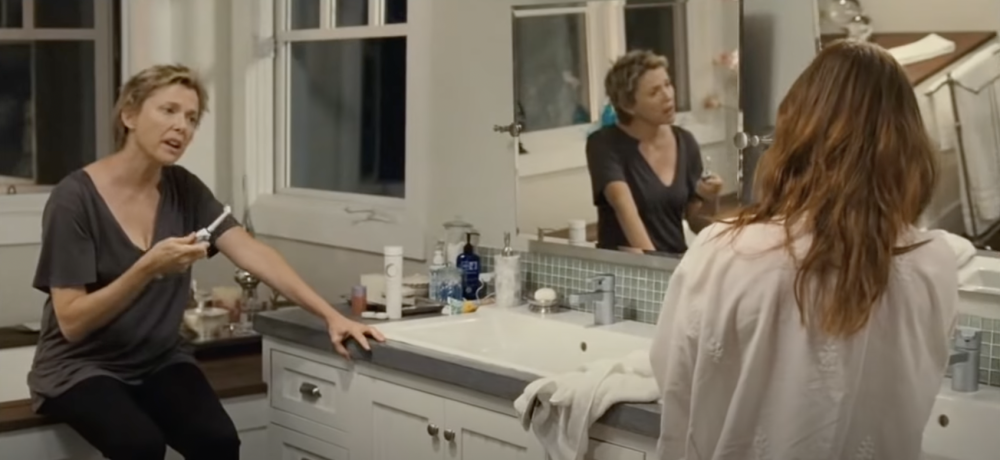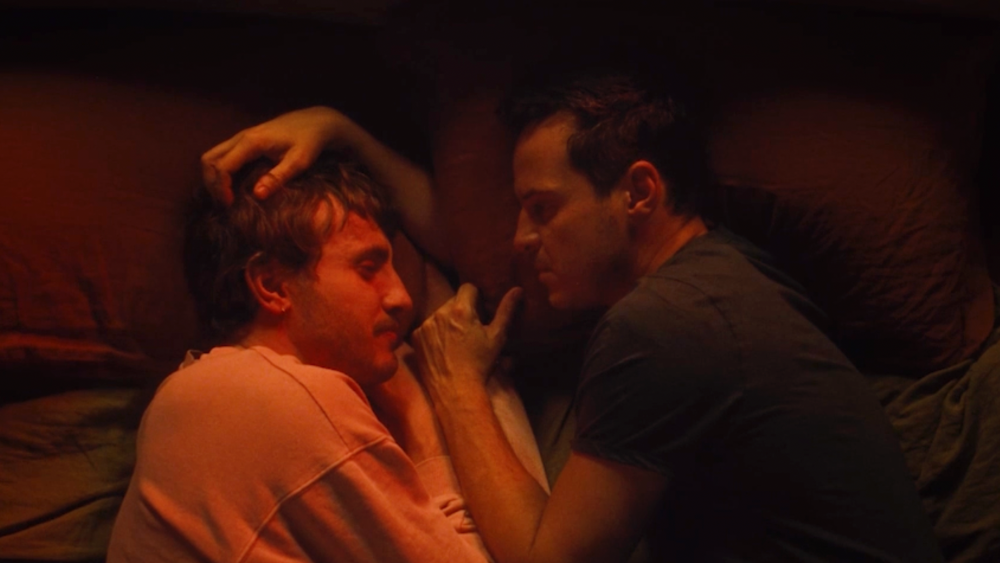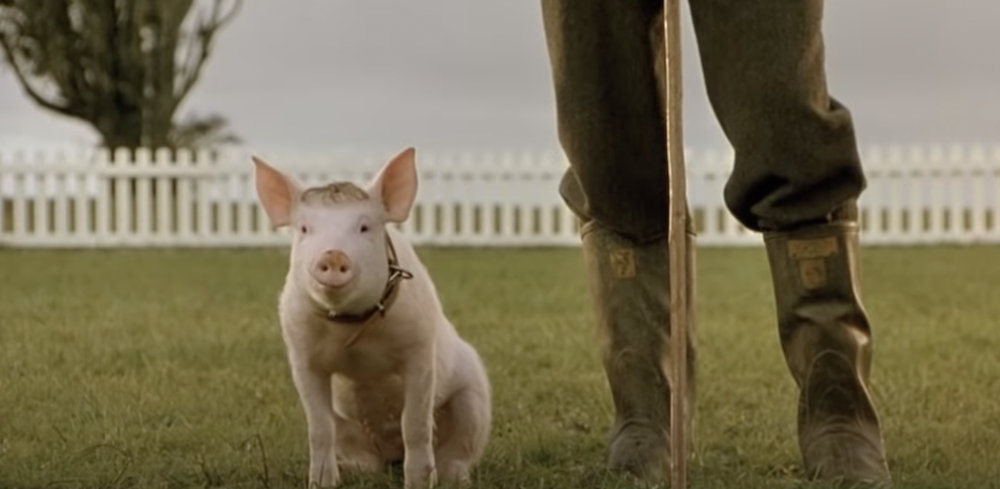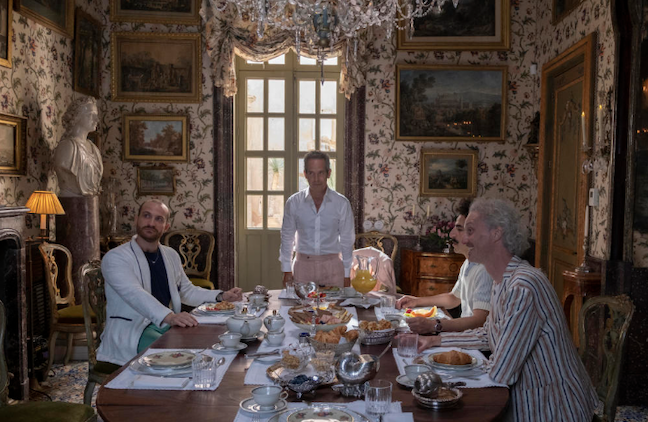Books & Culture
“The Kids Are Alright” Illustrates the Privilege In Mainstream Queer Stories
When neighbors and communities are erased from LGBTQIA narratives, queer stories often lose their real-world relevance

In the spring of 2003, I was directing a play in a park in Toronto. I was twenty-five. During a rehearsal break, one of the actors, also queer, made a melancholy comment about the lack of representation for queer people in film or on television, how laughably bad most of it was, how limited in scope. I argued that there was an advantage to barely registering in pop culture. Yes, we were largely invisible, but wasn’t there something to be said for that? Invisibility also meant a kind of freedom to imagine yourself, to not have your emotional and erotic life come ready made, an over-processed and sanitized product that could be sold to you. The world was clogged with popular images of straight life, and I thought it would be disorienting, to have all this directed at you all the time, to have so many models in front of you. These models, these relentless images, didn’t truthfully show anyone’s “real life,” the secret, inner life we all carry in our heads, because pop culture, by definition, is not capable of representing the granular precision of living. It’s just an advertisement for living, showing those to whom it is directed who they ought to be, what they ought to want. Not being advertised to, I insisted, fervently and patronizingly, meant we didn’t have to fit uneasily into a plastic model of ourselves. We were free to make ourselves up, and no one cared, or noticed.
This seems naïve to me now, of course. A luxury. My world was city-dwelling, largely made up of the educated middle class, and largely secular, and while I was cobbling together artistic work and making fun of people with career plans and a thirst for pop culture representation, that was itself a privilege of my time and place. Among other things, mine was the last generation to experience the relatively cheap rent that made it possible to patch together an artistic life in Toronto and still live well—frugally but with time for thinking and making. And while I was familiar with certain kinds of offhand prejudice, I had grown up with basic legal protections that others had fought for at immense risk to their livelihoods and their lives. I dismissed the desire for representation because I was young enough, and lucky enough, to feel very little need for it.
I had been with my girlfriend since university, but we both considered marriage and monogamy capitalist and patriarchal.
One of the most significant things that happened in 2003, shortly after this conversation, was equal marriage; the first queer marriages legally recognized in Canada were performed in Toronto that June, and federal recognition followed in 2005. I remember glancing at a picture on the cover of a newspaper when I went to buy cigarettes. Two couples, hands joined, weeping. I was happy for them, but thought they had nothing to do with me. I had been with my girlfriend since university, but we both considered marriage and monogamy capitalist and patriarchal, a bid to be recognized by the state that was wrong headed at best. I didn’t want the state to bless me. I didn’t appreciate the years of work that had gone into this moment: the setbacks, the derision, the effort of imagining something into being that had once been unthinkable to many people. The figures in the photograph seemed middle aged, hopelessly conventional. Touching, perhaps, but deluded.
Only a few years later, my girlfriend and I sat in a coffee shop in Philadelphia and realized we wanted to make plans, and that our plans were entirely predictable. We were performing at an anarchist puppet festival and staying in a punk house that smelled of raw sewage. We were on a break during the tech rehearsal. I remember the steam on the windows, the smell of the coffee, and what a relief it was to say that we wanted to move in together, figure out how to have a baby, and admit that we, like most people, wanted an ordinary, banal, domestic life in which we could be, some of the time, happy. Happiness was not a bourgeois delusion, or if it was, we wanted it anyway.
We found an apartment and we made plans, which included asking a close friend to be our donor. We took advantage of what was available to able-bodied white people from middle class backgrounds living in large urban centers just before the housing market went haywire. Eventually, we had a baby, got married in our donor’s living room, bought a house, had another baby, went on a detour which involved my wife being a surrogate for our donor and his wife (but that is another story), had another baby, and now find ourselves in our early forties raising three children, ensconced in a neighborhood that was once working class but is gentrifying at breakneck speed. We shake our heads at our obscene good fortune, living in a place where we could no longer buy a house, not in a million years. We are settled in our lives.
We know a number of our neighbors well, ranging from a cohort of other queer parents to the three generations of Portuguese Catholics in the bungalow next door, who have moved, in their attitude to us, from suspicious bafflement to an odd kind of affection. We gossip over the fence. We exchange Christmas presents for the children. My youngest and theirs sit on the curb, talking about basketball. This relationship feels as surprising as anything else my life has given me.
My children live in the knowledge that they can define themselves however they want.
This brings me back to my younger self and my high-handed dismissal of representation. In the time between glancing, a little scornfully, at the picture on the front page, and chatting on the sidewalk with my neighbors, I have found my private life completely and thoroughly advertised to, with the usual airbrushed inanities of all advertising. My children live in the knowledge that they can define themselves however they want. They see this, to some extent, reflected in the images around them. These images skew heavily towards straight-appearing and gender normative, and represent mostly white and improbably affluent people. But at least it’s there. Something vaguely resembling their life is not shown as either a punch-line or a sinister force, if it is shown at all. It’s possible that this helps them to feel real, in some way unimaginable to me, having grown up in a time when the idea of queers raising children was, in the mainstream, outlandish at best.
This brings me to The Kids Are Alright, which I saw for the first time the weekend it came out, with my wife and our second child, who was two months old and came with us to the theatre, where he helpfully slept, though we did change him in the aisle halfway through. I watched it again a month ago. That child is now eleven years old. My wife was working an overnight shift. The children were asleep downstairs. I watched it again partly out of love for Annette Benning and Julianne Moore, and partly out of curiosity, wondering whether I would loathe it as much as I did the first time.
A small recap: The Kids Are Alright is the story of a middle aged lesbian couple with two teenaged children who decide to make contact with their donor. Complications ensue, involving, among other things, one of the moms sleeping with the donor. It is a comedy about extraordinarily self-involved adults, and while it has a satirical edge, I’m not sure, having seen it twice, whether the creators are quite aware of how self-involved these characters are. The two mothers seem entirely conventional in their aspirations for their children, wanting to enclose them in a bubble of their own meticulously curated milieu. I don’t fault that as much as I did on the first viewing, not because I don’t still think it’s a vicious tendency, but because I would be dishonest if I didn’t admit to feeling this myself, some of the time.
There’s a phrase of Zadie Smith’s about privilege being institutionalized luck, and I would be lying if I said that I didn’t want to pass some of that luck on to my children. And I do pass it to them, every day, and it would be ridiculous to claim otherwise, or to claim I wished it otherwise, not as an abstract political conviction but as an act (for instance, one of many, my mother-in-law puts aside some money for their education, every month, though there are a thousand other things we could give that money to instead, and we don’t).
I realized what troubled me, the first time and even more the second time, what was missing from the film, from this representational watershed: Where are the neighbors?
On second viewing, I also didn’t feel as strongly about the affair with the donor, though I still think it’s not a betrayal of the partner as much as it’s a betrayal of the children, who are desperately trying to navigate a confusing new relationship, and I wasn’t sure the writers had considered this very much. But on the whole, I’ve mellowed. I no longer loathed it. But I realized what troubled me, the first time and even more the second time, what was missing from the film, from this representational watershed: Where are the neighbors? The acquaintances? All the people one encounters in the daily course of a life? It’s too much, of course, to demand that every little interaction be shown, but for representation to rise above animated cardboard, the viewer needs to be convinced of the reality of the characters, their texture, and that of the life around them. I don’t think anyone is convincingly real who appears to have no broader reality, beyond their family pod.
The film makes a few stabs at showing friendships that this family has, but I was left puzzled by their context, by what exists around them. They don’t seem, even in passing, to live in a neighborhood, or a city with many different layers, as all cities have. They work, they attend school, they go to restaurants and to parties. But they exist, for the most part, only in relation to one another. And I realized, watching the film after a decade had passed, that what seems to me to still be missing from cultural representation of queer families, is context. Where are the neighbors? Not as antagonists or allies, but as people in themselves, with their own complications, opinions, thoughts. The characters in The Kids Are Alright live in beautiful houses with sunny kitchens and comically large bathrooms (I have never, to my knowledge, met anyone with a double sink so they can stand beside their spouse, companionably brushing their teeth at bedtime), and speak in a kind of shorthand intelligible to members of a very particular segment of a very particular class (“I’m not being my higher self,” “He seems a little untended,” “It hasn’t risen to the point of consciousness for you,” and more of the same), but do not, other than Julianne Moore’s character being casually racist and deeply unfair to a gardener she’s hired, appear to ever, in their lives, speak to someone outside their boundary (unless they are buying something).
This seems to be related to what a family is supposed to be, and how the family, even reconfigured, is imagined. It’s a truism that we—and I use the word loosely, I’m never sure who we is, really—don’t want to simply replicate the nuclear family, so historically and culturally specific, so arid. In the struggle to insist that we are “as good as,” we risk becoming, ourselves, a kind of caricature of the pop culture vision of the middle class straight family: in the fortress, hermetically sealed, smugly and anxiously defending our borders.
Of course, the nuclear family, as depicted in pop culture, is a bogeyman and a mirage. Bluntly, I don’t know any, and not because my social world isn’t full of middle class straight people who are married to each other, apparently happily, raising their children in relatively tidy houses and driving their cars to work after dropping the kids off at the local school. But scratch the surface of any family at all, and complexities emerge. Different arrangements, different histories. No one is an advertisement. When I look at my neighbors, especially the ones who are enmeshed in my life in various ways but are not my friends, I realize there is so much about them that I don’t know.
It’s whoever is around you, and those people may be profoundly different from you, in background but also in belief, in politics, in taste.
Since we began to make our own family, I have thought a lot about that overly malleable word “community” and what it means. Affinity? Identity? Politics? Agreements of taste? It is all that, of course. I would be indulging in a fairytale if I didn’t say I had a “community” of friends with whom I share a bedrock of belief and understanding, and the comfort of shared histories and shared points of reference. But community is also proximity. It’s whoever is around you, and those people may be profoundly different from you, in background but also in belief, in politics, in taste. Some of these differences are overt, and some are not, but they run very deep all the same. And if we want to live together, the strange compromises we make with one another are the sinews of our shared lives. And as I get older, I become more and more impatient with representation that is not interested in context, meaning the relationships between neighbors and acquaintances and people chatting haphazardly in the street, who do not agree with each other, who have very little in common except the proximity that makes them maintain their civility, their awkward truce, which becomes, itself, an important kind of agreement.
I still feel uneasiness about marriage and domestic life, what it means, what it is. The acceptance of my neighbors makes me wonder what we have acquiesced to, who or what we think we are, to them and to ourselves, as we discuss work schedules and pack lunches in little zippered bags with superheroes embossed on the flap. I have done an almost complete about-face from the person who dismissed the couples in the photograph. I have become them. I hope, of course, that there is something radical in the ordinariness of our life, that we, in being married, queer the notion of marriage, which has adapted to us as much as we have adapted to it. That we are not an optimistic mock-up of this institution, but a transformation of it. Yet I’m uneasy with that idea, too: too much, too grandiose, too idealized. I don’t want to represent anything, because isn’t that the point of this normalcy, that we don’t need to be representational, ambassadors or apologists for our own lives? Perhaps my unease is actually a kind of embarrassment with my leap in status, my wholesome respectability, the apparent security and centrality of my social position, which my younger self could not have imagined. I am firmly on the inside. It feels permanent, and solid, so why do I intermittently feel unsure, as if I might be deluded, thinking my life was acceptable? I don’t know if this is a hangover from spending my youth and early adulthood assuming my own invisibility, or if this sense of precariousness is in fact a common experience, a human predicament that no one fully escapes. I suspect it’s both things.
I like to think that we both know that the other one is real, and that part of knowing this is not needing to agree.
There’s a Sam Lipsyte short story which has the line “either everyone is real, or no one is,” which I pedantically copied onto a slip of paper and taped to my desk as a useful piece of advice for anyone trying to write fiction. I think of it sometimes when I watch my neighbor, the grandfather of the family in the bungalow next door, walking up and down our street, which he often does, a bit aimlessly. He is retired, and many of his friends on the street, people who moved here in the wave of Portuguese immigration to Toronto in the seventies, have sold their houses to people like me and moved to the suburbs, or they have died and their children have sold their houses (to people like me). I watch him and think about what it means to be seen, to be represented. Surely this man feels that his neighborhood has become unfamiliar, that he has become invisible? Surely he must at times feel that the world he knew is vanishing? Surely he must often feel at a loss, on the outside? I don’t want to romanticize him or his family. He is sometimes a very angry man, and has terrible fights with his wife, who is often also very angry. Our two families, from experience, tend to avoid politics, and they have expressed opinions I find bigoted and sometimes, if I’m honest, just stupid. I’m sure they feel the same way about me, as is their right. Instead, we say it is a nice day out, or that we’re going to have rain, or I ask how his granddaughter is liking high school, or we complain about the number of houses under renovation, all the noise and dust. I like to think that we both know that the other one is real, and that part of knowing this is not needing to agree.
When I airily denied any desire for representation in 2003, I was an outsider. I could not marry, and when I could my marriage was not recognized when I travelled (and still isn’t, depending on where we go). I sometimes felt unsafe holding my girlfriend’s hand in public. There were numerous hurdles to starting a family, and my girlfriend and I were wary of presenting as a couple when we talked to prospective landlords. Much of that has changed. When my partner gave birth to our daughter, the court decision that meant I could go on the birth certificate without going through an adoption process was less than a year old, and even then we still had to lie and pretend our donor was anonymous. I am keenly aware that the protections we have are very local and very fragile. But with all that, I am now on the inside, and wondering what that means. Wondering if “insider” and “outsider” are as much of a mirage as the nuclear family, a kind of provisional placeholder for something that doesn’t actually exist. I find my relationship to the desire for representation has changed. I am reconciled to being advertised to. I am grateful for it, even, realizing that the relative tolerance of some of my neighbors has been helped by pop culture giving them a sense that we are normal, and commonplace. I sob at the scene at the end of The Kids Are Alright when the daughter leaves for university, because I see our daughter a few years down the road, getting ready to leave us and start her own life, and I see my wife and I, now, like the characters, middle aged, though we are in a different tax bracket and will never have, or want, a double sink. I watch Modern Family with our children, a show I find retrograde in so many ways that I couldn’t list them here, but they love it and I try not to overanalyze it in front of them because it ruins their enjoyment, and I want us to agree to disagree. But I’m still looking for representation of a queer family that is unsentimentally interested in the neighbors, in the web of people who have no affinity, in all the encounters between people in proximity who will never be in agreement. Either everyone is real, or no one is.








